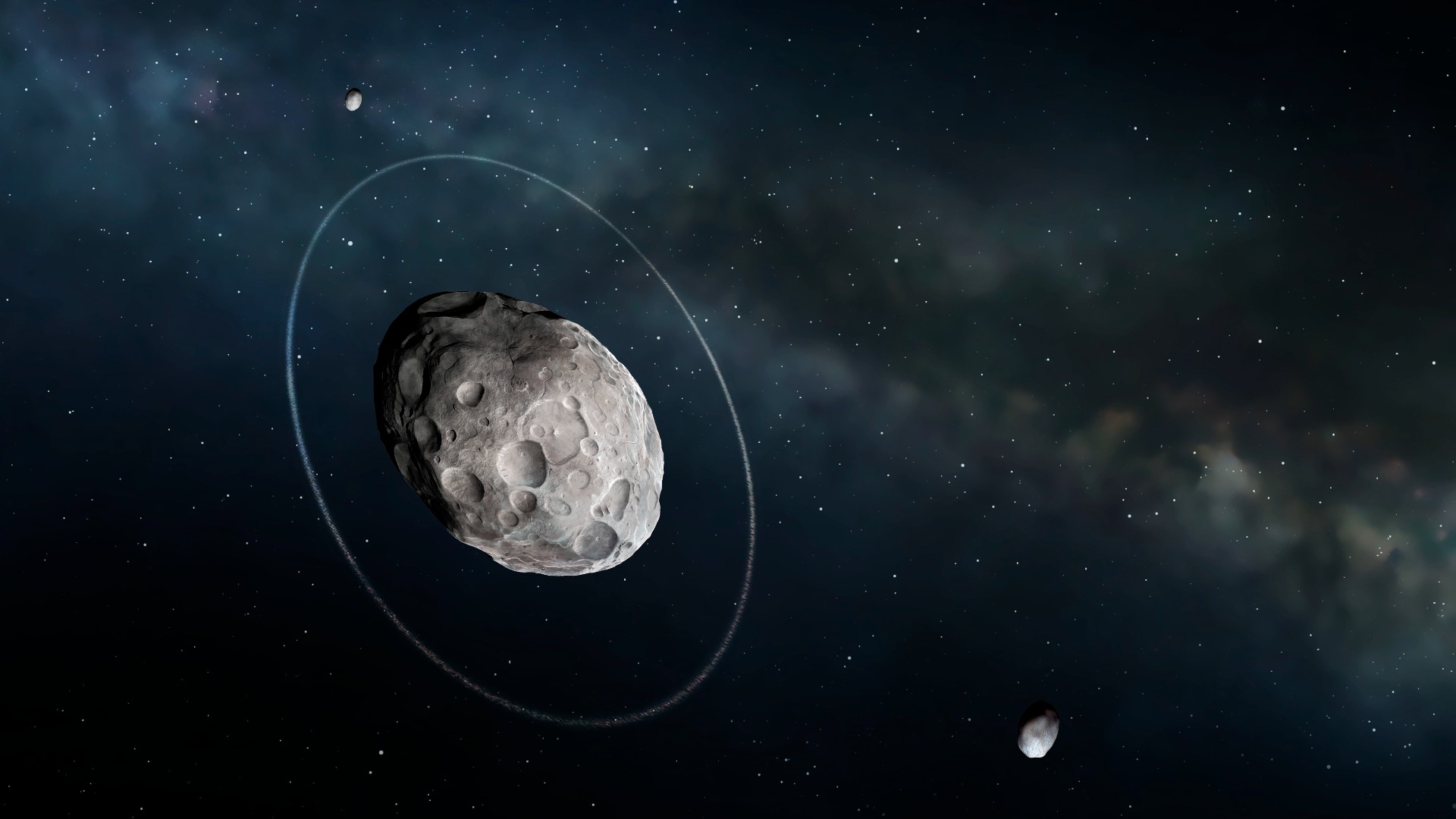See dwarf planet Haumea at its closest to Earth in 285 years tonight
Haumea spins so fast that its shape is more football-like than round.

If you've never heard of the dwarf planet Haumea, tonight's a pretty good night to become familiar with the football-shaped celestial body.
Located in the Kuiper Belt beyond Neptune, this frigid dwarf planet reaches both opposition (the point directly opposite the sun from the perspective of Earth) and perigee (the point in its orbit closest to Earth) tonight. And it'll be visible in the night sky in the constellation Boötes.
From New York City, per In-the-Sky.org, Haumea will become visible in the night sky at 8:49 p.m. EDT (0049 GMT on April 21) and will remain so until dawn, when the sun's light will overpower the dwarf planet. Look to the east some 24 degrees above the horizon, which will correspond to just over two widths of your fist held at arm's length.
Related: NASA seeks origin of 'weird' fast-spinning dwarf planet Haumea
Haumea was first spotted by two different groups of astronomers looking at observations made between 2003 and 2004, earning it the name 2003 EL61. Until 2008, it was classified as a Kuiper Belt Object (KBO) — a reclassification by the International Astronomical Union deemed it a dwarf planet, joining, Pluto, Eris, and Makemake in the Kuiper Belt and Ceres in the asteroid belt. At that time, it was given the name Haumea after the Hawaiian goddess of fertility.
The dwarf planet, which is roughly the size of Pluto, takes about 285 years to orbit the sun, and its distance from Earth varies from 34 to 51 astronomical units, or AU (one AU is the distance between the Earth and the Sun). As it's reaching perigee, that puts it at a distance of 34 AU tonight.
Though its orbit might be quite slow, Haumea rotates extremely fast — it takes just four hours to complete one rotation. Because of the centrifugal force it experiences due to this rotational speed, Haumea is stretched out like a football instead of round like most other planets and dwarf planets. Haumea is also the only known dwarf planet to have rings, and it also has two small moons, Namaka and Hi'iaka, which are the daughters of Haumea in Hawaiian mythology.
Get the Space.com Newsletter
Breaking space news, the latest updates on rocket launches, skywatching events and more!
If you'd like to get a closer look at Haumea, dive into our guides to the best telescopes and best binoculars. And if you'd like to photograph the night sky while you're stargazing, our guides to the best cameras for astrophotography and best lenses for astrophotography might be helpful.
Editor's Note: If you take an image of Haumea at opposition and would like to share it with Space.com's readers, send your photo(s), comments, and your name and location to spacephotos@space.com.
Follow Stefanie Waldek on Twitter @StefanieWaldek. Follow us on Twitter @Spacedotcom and on Facebook.
Join our Space Forums to keep talking space on the latest missions, night sky and more! And if you have a news tip, correction or comment, let us know at: community@space.com.

Space.com contributing writer Stefanie Waldek is a self-taught space nerd and aviation geek who is passionate about all things spaceflight and astronomy. With a background in travel and design journalism, as well as a Bachelor of Arts degree from New York University, she specializes in the budding space tourism industry and Earth-based astrotourism. In her free time, you can find her watching rocket launches or looking up at the stars, wondering what is out there. Learn more about her work at www.stefaniewaldek.com.
-
rod "From New York City, per In-the-Sky.org(opens in new tab), Haumea will become visible in the night sky at 8:49 p.m. EDT (0049 GMT on April 21) and will remain so until dawn, when the sun's light will overpower the dwarf planet. Look to the east some 24 degrees above the horizon, which will correspond to just over two widths of your fist held at arm's length."Reply
I checked my location for 0049 UT 21-April using Starry Night Pro Plus 8. It is in Bootes and could be visible, but the apparent magnitude shows 17.3. My 10-inch Newtonian is rated for 14.0, and that in a dark sky. Something to consider for any who attempt to view Haumea. -
Idaho Astro Yeah, the article clearly implies that a casual observer will be able to see it without optical aid, a slight exaggeration given that it will be over 25,000 times fainter than the dimmest star visible from a dark site. Not to mention the suggestion that one can find it by "looking east...two fist widths above the horizon," and that it will remain in that spot until dawn. The reality is that it would take a skilled observer with a sizeable telescope and dark, pristine skies, and even then, picking it out from the multitude of stars of similar brightness would be challenging at best.Reply
Do better, Space.com; this is embarrassing.









